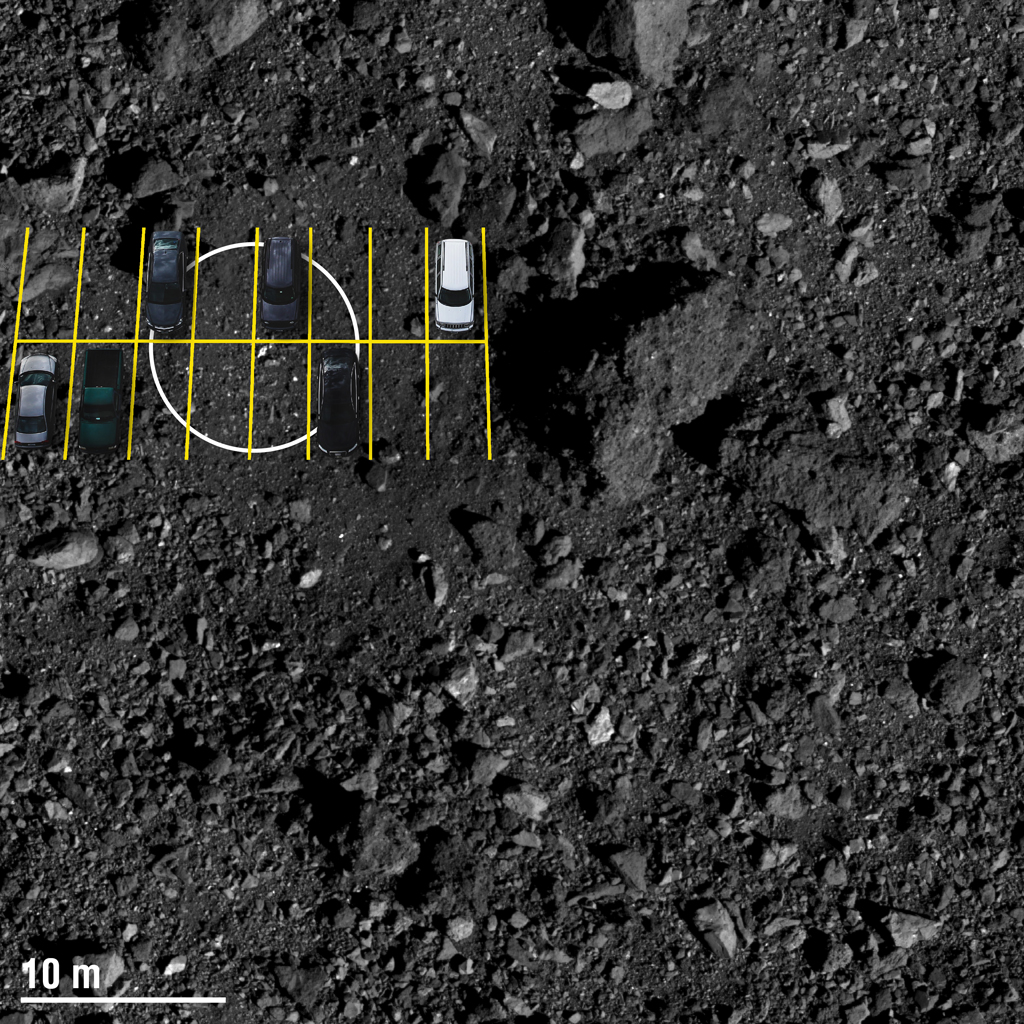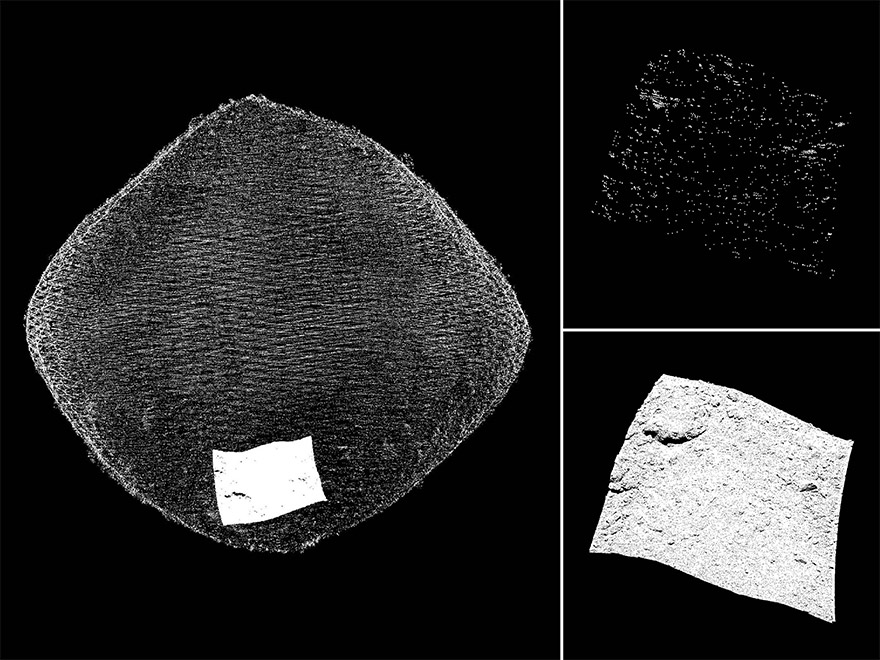Canadian laser's high-resolution maps play a crucial role in selecting Nightingale, OSIRIS-REx's final sample site
These detailed views of the Nightingale site (complete with boulders, craters and other geological features) are based on a series of measurements taken by the OSIRIS-REx Laser Altimeter (OLA), the Canadian laser instrument aboard NASA's OSIRIS-REx spacecraft. Image creation: Michael Daly, Centre for Research in Earth and Space Science, York University. (Credits: NASA, University of Arizona, Canadian Space Agency, York University, MDA)
After a challenging process, Nightingale was officially chosen as OSIRIS-REx's final site to collect a sample of asteroid Bennu.
The Canadian OSIRIS-REx Laser Altimeter, or OLA, scanned the asteroid's surface to create high-resolution 3D maps that were crucial to help mission scientists select the best sample site. As the mission progressed, scientists discovered that Bennu's surface was much more rugged than initially expected. Without OLA data, the selection of a sample site would have been even more complex. The Canadian instrument produced the most detailed three-dimensional measurements of a celestial body, vital for such a challenging mission.
In August, Sandpiper, Osprey, Kingfisher, and Nightingale were identified as the four candidate sample sites. NASA's OSIRIS-REx spacecraft performed a series of flyovers to provide the science team with high-resolution data and imagery of each site. Detailed images of the boulders, craters and other geological features were produced to help mission scientists select the safest and most scientifically interesting location. Nightingale was then chosen as the primary site, and Osprey as the back-up option.
The Nightingale site is located in a large crater with several sampling regions and holds the greatest amount of fine-grained material, which is essential to collect enough sample to ensure mission success. Moreover, Nightingale's regolith (the layer of loose material covering solid rock) is relatively smooth, well preserved and freshly exposed. This means the site would likely provide a pristine sample of the asteroid, giving the team insight into Bennu's history. But collecting this sample will be a tricky endeavour as the OSIRIS-REx spacecraft will have to get around a boulder the size of a building that is located on the crater's eastern rim.
OLA will continue to work in tandem with other instruments on the spacecraft to gather crucial data about the primary and backup sample sites. Sample collection is scheduled for summer , and the sample will return to Earth in . Thanks to the Canadian Space Agency's contribution to the mission, Canada will receive a portion of the returned sample.

The OSIRIS-REx spacecraft is about the size of an SUV, so for a familiar perspective, the Nightingale site (white circle) is superimposed over a standard parking lot. (Credit: NASA/Goddard/University of Arizona)

